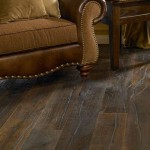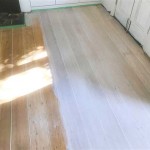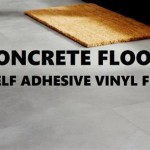How to Remove Old Linoleum Flooring
Linoleum flooring, a durable and long-lasting material, has been a popular choice for homes for decades. While it's known for its practicality, the time inevitably comes to replace it. Removing old linoleum flooring can be a challenging task, but with proper preparation and tools, it's a manageable project for homeowners. This article will guide you through the different methods and steps involved in removing old linoleum flooring, ensuring a smooth transition to your new flooring.
Assessing The Linoleum
Before embarking on the removal process, it's crucial to assess the condition of the linoleum. This will determine the best method for its removal. If the linoleum is loose or damaged, it can be easily removed by hand. However, if it's adhered to the subfloor with adhesive, you'll need to use a different approach.
Pay attention to the following factors:
- Age: Older linoleum is more likely to be adhered firmly.
- Thickness: Thicker linoleum can be more challenging to remove.
- Type of Adhesive: Some adhesives are more difficult to remove than others.
- Underlying Subfloor: The condition of the subfloor can affect the removal process.
Tools and Materials
Before you begin, gather the necessary tools and materials to ensure a smooth removal process. The tools you'll need may vary based on the type of linoleum and its subfloor.
Here is a list of essential tools:
- Work Gloves: Protect your hands from sharp edges.
- Safety Glasses: Protect your eyes from debris.
- Utility Knife: For scoring and cutting linoleum.
- Pry Bar: To loosen and lift linoleum.
- Hammer: To drive nails or chisel.
- Chisel: To break up linoleum and adhesive.
- Shop Vac: For cleaning up debris.
- Scraping Tools: To remove adhesive residue.
- Floor Scraper: Used to remove larger pieces of linoleum.
- Floor Sander: To smooth rough surfaces, but not necessary for all cases.
- Chemical Stripper (Optional): If using a chemical stripper, ensure proper ventilation and safety precautions.
Methods of Removal
There are several methods to remove old linoleum flooring, each suited for different situations. The most common methods include:
1. Hand Removal
This method is suitable for loose or damaged linoleum. Start by scoring lines across the linoleum using a utility knife. Then, use a pry bar to lift and pull up the linoleum in sections. Be careful not to damage the subfloor. For stubborn sections, you can use a chisel and hammer to break up the linoleum.
2. Chemical Stripping
Chemical stripping is suitable for linoleum with a strong adhesive bond. This method involves applying a chemical stripper to the linoleum and allowing it to soften the adhesive. Once the adhesive is softened, you can use a scraper to remove the linoleum. It's crucial to wear proper protective gear and ensure good ventilation when using chemical strippers. Always follow the manufacturer's instructions for safe handling and application.
3. Mechanical Removal
Mechanical removal uses specialized tools like a floor scraper or floor sander to remove the linoleum. This method is effective for removing large areas of linoleum and adhesive. However, it's important to exercise caution to avoid damaging the subfloor. If using a sander, use a coarse grit sandpaper to remove the linoleum and a finer grit to smooth out any remaining adhesive residue.
4. Removal with Heat
Heat is sometimes used to soften adhesive, making it easier to remove linoleum. However, this requires caution as excessive heat can damage the subfloor. To apply heat, use a heat gun or a hair dryer. Apply the heat to the linoleum, but avoid prolonged exposure to prevent damage.
Important Considerations
Once the linoleum is removed, check the condition of the subfloor. If there are any damaged areas, repair them before installing new flooring. After removing the linoleum, inspect the subfloor for any damage or imperfections. If you notice any inconsistencies, such as cracks, gaps, or unevenness, it's essential to repair these before installing new flooring. This will ensure a smooth and even surface for the new floor.
Lastly, remember that safety is paramount during the removal process. Wear appropriate protective gear, including work gloves, safety glasses, and a dust mask. Use tools responsibly and avoid applying excessive force, which can lead to accidents or damage to the subfloor.

What You Should Know About Removing Old Linoleum Or Vinyl Flooring Hq Longwood Fl

How To Remove Vinyl And Linoleum Flooring 2024 Today S Homeowner

How To Easily Remove Linoleum Houseful Of Handmade

Diy Vinyl Or Linoleum Flooring Removal Dumpsters Com

How To Replace Linoleum Floor In A Correct Way

How To Remove Old Vinyl Or Linoleum Flooring Kitchens And Bathrooms

How To Remove Linoleum 13 Steps With S Wikihow

How To Remove Linoleum 13 Steps With S Wikihow

Tearing Out Old Kitchen Flooring Planitdiy

Our Kitchen Renovation Part V Removing Linoleum
See Also







